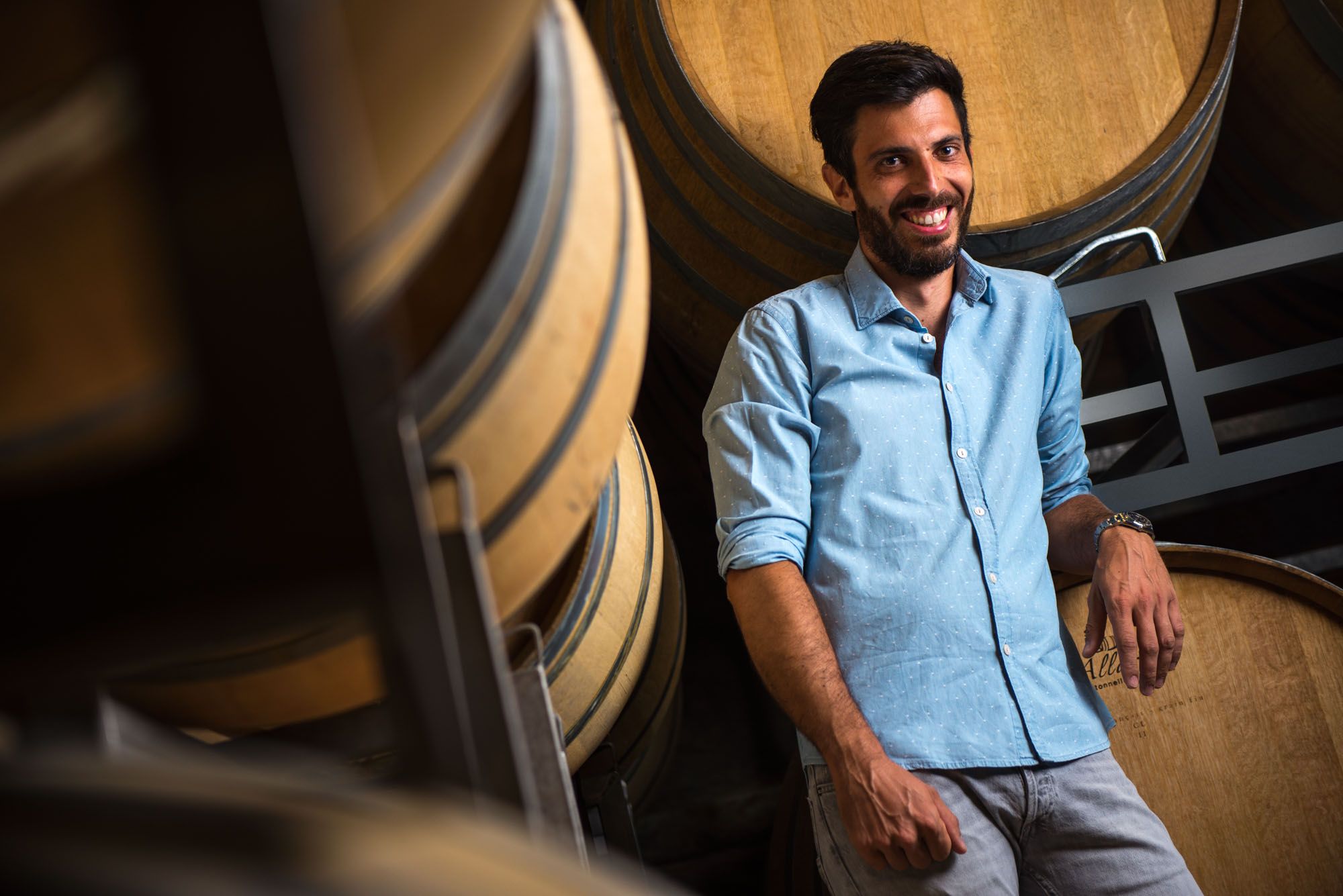“The composition of the soil is quite classic for La Morra, where many think elegance is the main feature,” Alessandro said. “It is also much more fresh than other denominations.”
After what was one of the greatest of Barolo vintages in 2016, lovers of Italy’s most noble grape, Nebbiolo, were always going to be curious as to how 2017 would turn out in Piemonte. The answer is not as “perfect” as 2016, as Alessandro Veglio described it, but still a very good year that will give a lot of pleasure. And the Mauro Veglio stable of Barolos showed very well in a recent tasting, which ought to interest those in the UK on-trade who are looking for high quality Nebbiolo at a fair price.

Alessandro Veglio
Alessandro Veglio, nephew of Mauro after whom the brand was named on set-up in 1992 when he took over management of the winery from his father Angelo, is keen to gain traction in the UK market, where Berry Bros constitute the company’s sole representation. “The UK is very important for us,” Alessandro told The Buyer. “It’s great Berry Bros are taking 10% of our single vineyard production and selling our wines in the off-trade where sales have been very good. But I want to get us into the UK on-trade as we are keen to diversify. The United States and Scandinavia are currently our two biggest markets.”
Mauro Veglio produces 120,000 bottles per annum, with 11 labels, from 19 hectares of vineyards distributed through La Morra, Monforte d’Alba and Barolo. These include five important crus, or Menzioni Geografiche, of Barolo: Arborina, Gattera, Castelletto, Paiagallo and Roche dell’Annunziata. All but the latter were tasted.
Mauro Veglio’s viticultural and winemaking philosophy will be music to the ears of those whose watchwords are sustainability and drinkability. No pesticides or herbicides; nothing but manure for fertilisation; avoidance of over-extraction; and no more than 30% new oak for maturation.
“We vinify our Barolo crus by respecting the seasonality of each harvest, without forcing the grapes’ limits or artificially adjusting during the course of our work,” Alessandro declared. “If our grapes do not display the desired characteristics, we prefer not to vinify the vintage at all rather than betray the quality towards which we strive. I’m convinced the main part of winemaking is in the vineyard.”
The aim is a Mauro Veglio style of wines. What is it exactly though? “It is not traditionalist and modernist,” Alessandro continued. “We have different length of times for maceration – mostly between 20 and 25 days. We are still using barriques but we are reducing a lot the amount of new oak to 30% maximum. Yes we want concentration but balance is the most important word for me.”
How the wines were tasting

2017 Mauro Veglio Barolo, Barolo DOCG
Veglio revealed the idea behind this Classico wine was that it should be ready to drink on release. Less extraction than the rest of the range with 10-15 days on the skins, and less new oak (15-20%). Super-fresh acidity and very approachable tannins. This was Alessandro’s first vintage with his uncle Mauro, having been making wine under his own Alessandro Veglio label since 2005. 14.5% abv
2017 Mauro Veglio Arborina, Barolo DOCG
From 2.5 hectares of clay, sand and limestone (south-east facing at 250-300m) that Alessandro thinks produce the brand’s most elegant wine. “The composition of the soil is quite classic for La Morra, where many think elegance is the main feature,” Alessandro said. “It is also much more fresh than other denominations.” The freshness of the wine is as marked as the finesse, which is almost ethereal. Violet aromas are intense with black truffle notes. Tannins have more sweetness and roundness than those of 2016, which were finer. 14.5% abv
2017 Mauro Veglio Gattera, Barolo DOCG
Less than a kilometre from Arborina, but so different according to Alessandro. The oldest Mauro Veglio vineyard, having been planted in 1950 (the others being mid-1980s) on clay, sand, limestone and compact marl. The warmest site, it produces a very structured wine with a medium to full body and firm, fine tannins. Spicy, warm and intense with tar and walnut notes with a tight finish. 14.5% abv
2017 Mauro Veglio Castelletto, Barolo DOCG
“The most structure and tannins we have in our range,” Alessandro revealed. “There are many different expressions in this single vineyard of four hectares, which is divided into four different plots.” The highest, at close to 400m, yields the highest acidity, with slightly less from those plots at 250-300m. The soil composition, with lots of sand, leads to bigger structure. The wine possessed notable freshness with balsamic, mint and eucalyptus notes. 14.5% abv
2017 Mauro Veglio Paiagallo, Barolo DOCG
A new label, whose first vintage was 2016. Soil composition is one third clay, one third tuff and one third sand. Two days of cold maceration at 8-10C. “Here in my opinion is the great expression of the softness and the largeness,” Alessandro said. A beautifully elegant wine with freshness, overt but well-integrated tannins and a very long finish. 14.5% abv
































